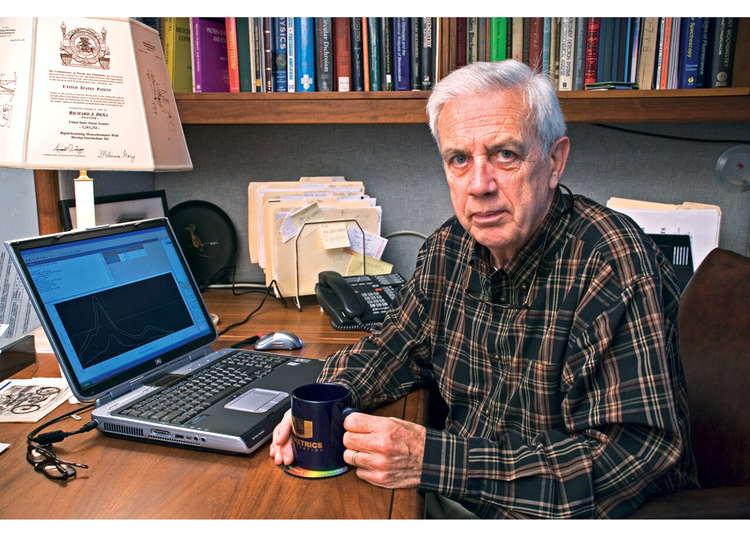Rumored Buzz on Uv/vis/nir
Rumored Buzz on Uv/vis/nir
Blog Article
Uv/vis Fundamentals Explained
Table of ContentsThe Facts About Circular Dichroism RevealedCircular Dichroism - TruthsThe Main Principles Of Circular Dichroism The Single Strategy To Use For Circular DichroismEverything about Uv/vis/nir

Spectrophotometry is a tool that hinges on the quantitative analysis of molecules depending on how much light is soaked up by colored substances.
Facts About Circularly Polarized Luminescence Uncovered
A spectrophotometer is typically used for the measurement of transmittance or reflectance of solutions, transparent or nontransparent solids, such as refined glass, or gases. Many biochemicals are colored, as in, they take in noticeable light and therefore can be measured by colorimetric procedures, even colorless biochemicals can often be converted to colored substances ideal for chromogenic color-forming reactions to yield substances suitable for colorimetric analysis.: 65 However, they can also be created to determine the diffusivity on any of the listed light ranges that normally cover around 2002500 nm using various controls and calibrations.
An example of an experiment in which spectrophotometry is used is the decision of the balance constant of a service. A particular chain reaction within a service may happen in a forward and reverse direction, where reactants form products and products break down into reactants. Eventually, this chemical response will reach a point of balance called an equilibrium point.
Unknown Facts About Uv/vis
The quantity of light that travels through the service is a sign of the concentration of particular chemicals that do not allow light to pass through. The absorption of light is due to the interaction of light with the electronic and vibrational modes of molecules. Each kind of molecule has an individual set of energy levels related to the makeup of its chemical bonds and nuclei and hence will absorb light of specific wavelengths, or energies, resulting in special spectral homes.
The use of spectrophotometers covers numerous clinical fields, such as physics, materials science, chemistry, biochemistry. spectrophotometers, chemical engineering, and molecular biology. They are commonly utilized in many markets consisting of semiconductors, laser and optical production, printing and forensic examination, in addition to in labs for the study of chemical substances. Spectrophotometry is often used in measurements of enzyme activities, decisions of protein concentrations, determinations of enzymatic kinetic constants, and measurements of ligand binding reactions.: 65 Ultimately, a spectrophotometer has the ability to figure out, depending on the control or calibration, what compounds exist in a target and precisely just how much through estimations of observed wavelengths.
This would come as Going Here a solution to the previously produced spectrophotometers which were not able to absorb the ultraviolet correctly.
Uv/vis Can Be Fun For Everyone
It would be found that this did not provide satisfying results, for that reason in Design B, there was a shift from a glass to a quartz prism which permitted better absorbance outcomes - circular dichroism (https://urlscan.io/result/3823bc3a-74b6-4d0f-8f09-522e983b4d26/). From there, Model C was born with a change to the wavelength resolution which wound up having three units of it produced
It irradiates the sample with polychromatic light which the sample soaks up depending upon its properties. Then it is sent back by grating the photodiode variety which finds the wavelength region of the spectrum. Considering that then, the development and application of spectrophotometry gadgets has increased exceptionally and has turned into one of the most ingenious instruments of our time.

Little Known Questions About Uv/vis/nir.
The grating can either be movable or fixed.
In such systems, the grating is repaired and the strength of each wavelength of light is measured by a various detector in the array. In addition, most modern-day mid-infrared spectrophotometers use a Fourier transform technique to get the spectral information - https://www.brownbook.net/business/52441542/olis-clarity/. This strategy is called Fourier change infrared spectroscopy. When making transmission measurements, the spectrophotometer quantitatively compares the portion of light that goes through a reference service and a test service, then electronically compares the strengths of the 2 signals and computes the portion of transmission of the sample compared to the reference standard.

Report this page